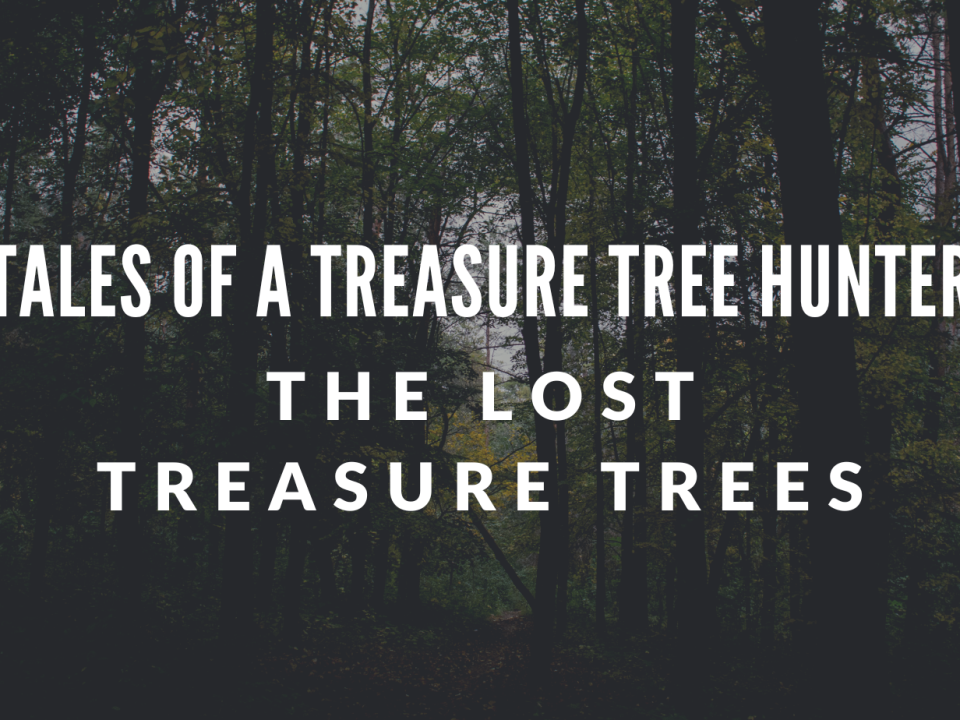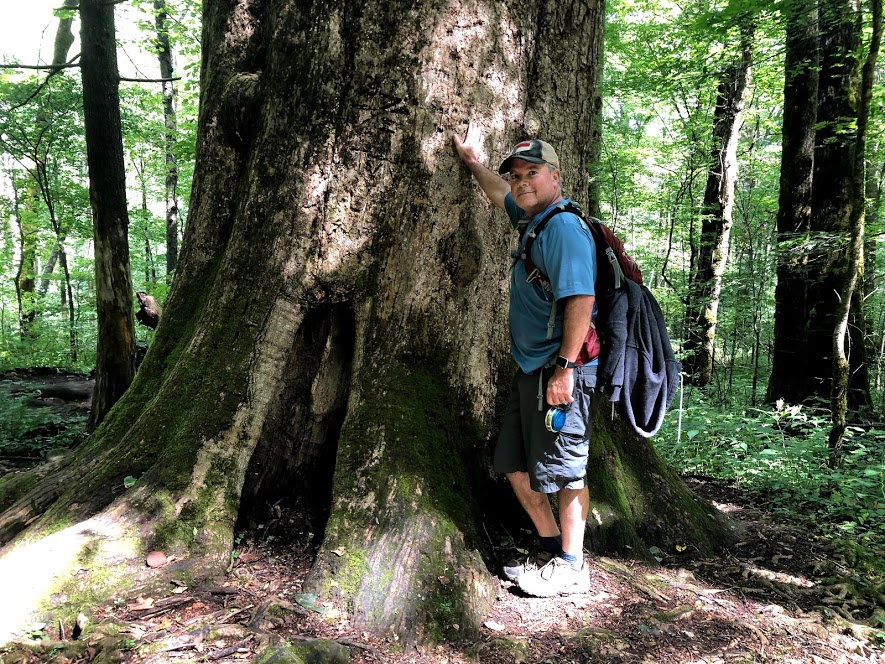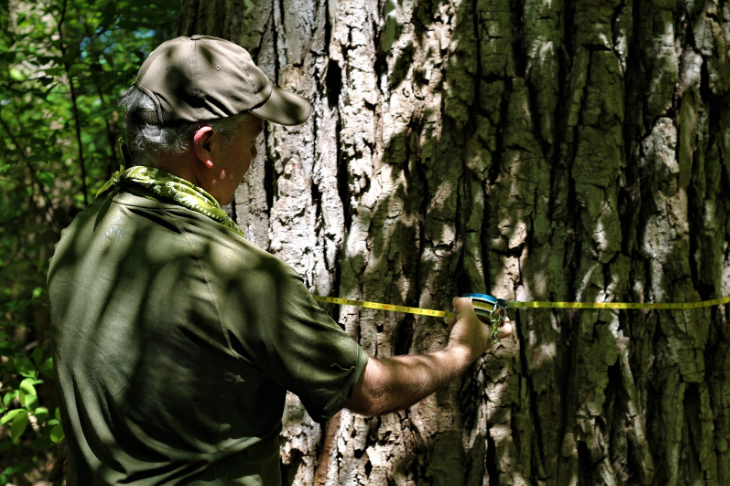Treasure (Tree) Hunt

Winter Dormancy in Trees
12.18.20
Tree of January 2021: Eastern Red Cedar
1.05.21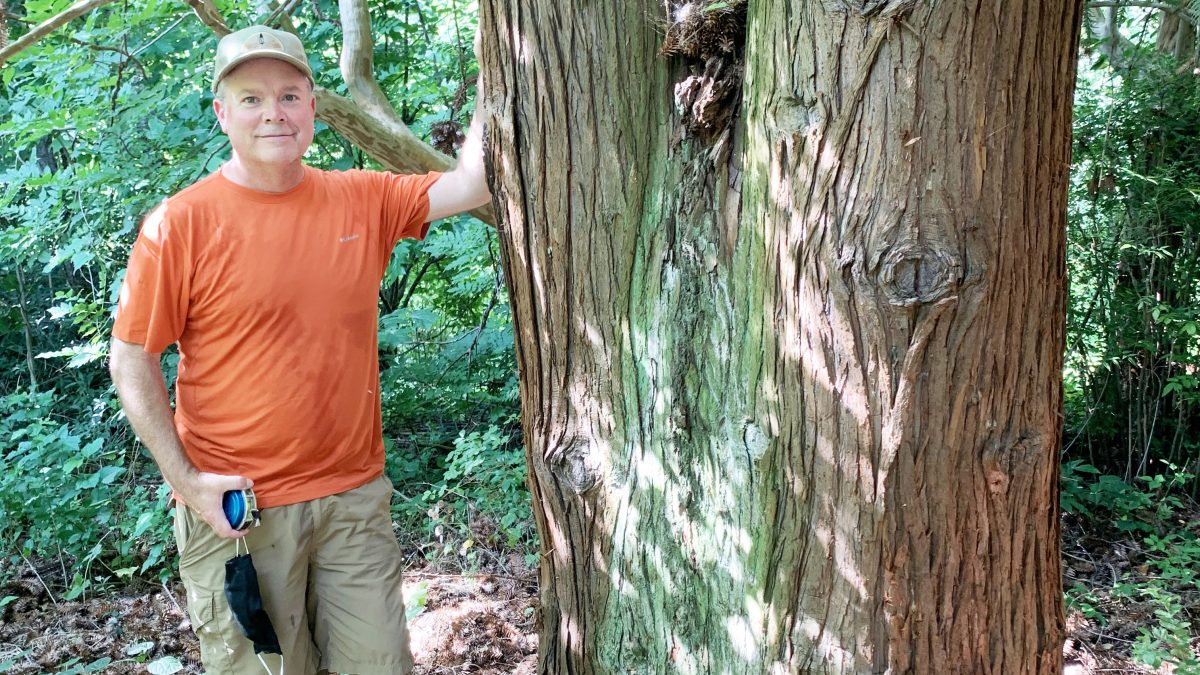
By: Brett Dupree
We are getting very close to confirming all of the original Treasure Trees. During the last two years, I’ve been on a personal quest to both find the original list of 123 trees and confirm every one of them… living or dead. The list itself passed down from the original committee over to the Mecklenburg County Conservation Science Office, into the hands of Don Seriff. Don was Manager of the office in the early 2000’s. Don had worked with Tom Martin and Charlie Williams to pick up details about program operations and take ownership of the original documentation.
The last set of new trees were added to the original list in 2000. In that year, the committee added 18 trees to the program. The county maintained the original list of trees, and performed assessments on them. They did not add any more new trees to the program after 2000, though. Sometime around 2007, a new Arborist department was created and Don Seriff handed the program off to that group. A year later the economic recession hit, which resulted in massive job cuts for Mecklenburg County government. The Treasure Trees Program just faded away.
Since much of the program was done on paper at that time, it posed major challenges for other enthusiasts to locate the original list and work to revive the program. Patrick George and Patrick Anderson received some of the original program paperwork, which did include the original list of trees. They began building the Queen’s Crown non-profit focused on celebrating the great trees of Mecklenburg County, including the original Treasure Trees. Other individuals like Mike Orell did their own research, trying to piece back together the original list of 123 trees.
Tom Martin co-founded the original program with Joe McLaurin way back in the late 80’s and early 90’s. Through some detective work, I was able to track Tom down here in Charlotte and connect up with him a little over a year ago. Tom has been more than happy to share what he kept around home from the original program. One of the things he shared was the original tree list and some other paper documentation that had been converted to PDF format. The original list had great location notes for some of the trees, and very vague notes for many others. Tracking down and verifying all 123 was a daunting task, but the new committee members were very motivated to undertake the task. For me, it was like a treasure hunt.
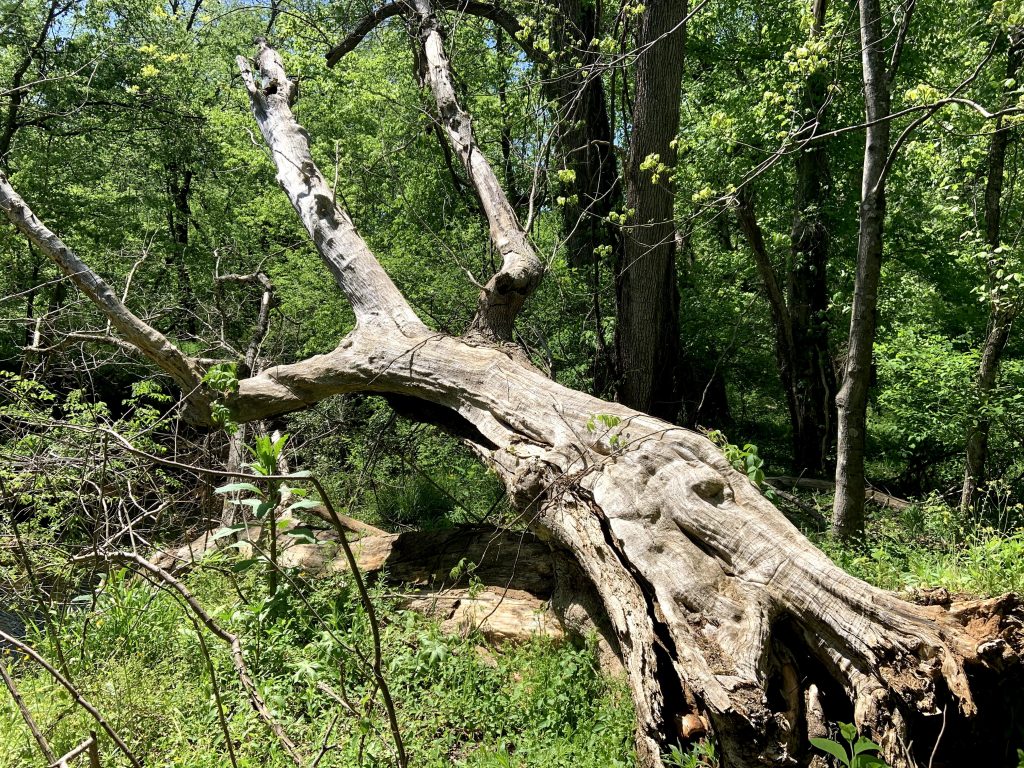
We have now found 61 of the original trees, and we have confirmed that 52 are gone. One of the original trees on the list was initially identified incorrectly as Alaska Cedar (#002 on the list), and was then later re-listed correctly as Oriental Arborvitae (#044). After a couple of years, a few field trip bushwhacks, and knocking on a lot of doors we are down to only 9 trees. This has been quite a feat considering how old the original program was, and how little information we had to go on for many of the trees.
I have used many techniques for tracking down trees, or the remains of trees. The first and most obvious is doing very specific Google searches. I had some original notes that the Osage Orange (#050) was caught on fire July 4th, 2007. It burned for hours, with firefighters dumping almost 15,000 gallons of water on it. This tree was a monster, reigning as state co-champion since 1977. It was 24 feet in circumference around the trunk, 4.5 feet off the ground. My searches led me to some old photos posted by the grandson of the original property owner, which tipped me off that it stood in the Buckleigh neighborhood very close to Reedy Creek Park. Original notes from the program documents just said, “In pasture just east of main entrance to Reedy Creek Park.”
I started looking at Google Earth Pro imagery of that area, and found the Buckleigh neighborhood. Right smack in the middle of the neighborhood is a very small public green space. Aerial imagery revealed a huge tree stump, and another tree next to it. Not too long after that, I drove out to the neighborhood and found that the stump is indeed the remains of the original Treasure Tree. It is so large, you can stand in the middle of it and have 2-3 feet of stump around all sides of your feet. Just a few feet away from it stands what is probably now the biggest Osage Orange in the county, which the new committee will almost certainly consider for a new nomination.
Chris Chao found quite a few trees of his own just by going out to known addresses and knocking on doors this past summer. With this approach he found the White Oak (#037), the Loblolly Pine (#106), and the Willow Oak (#084). back in the spring, I made a list of about 15 unconfirmed trees with known addresses. I set out writing letters, printing them out, and mailing them to the current homeowners. This led me to at least half a dozen confirmations, with some trees still standing and some the owners knew had been removed. Another great technique is to use Google Earth Pro historical aerial imagery. If we know a pretty good location by address, we can step back all the way to 1993 to see if a Treasure Tree once stood in a spot. Stepping through photos by year, you can even spot the point at which it disappeared.
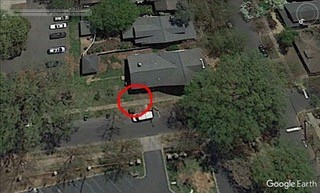
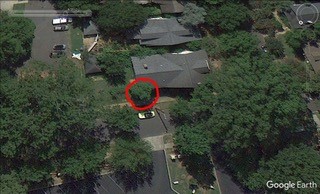
I was trying to locate a Sassafras (#090) in Dilworth, not too far from my house. Original program notes had the house address and general location, but didn’t tell whether the tree was in the front or back yard. I walked by many times, and never once saw a Sassafras. Using Google Earth Pro, I found the tree standing beside the sidewalk in 2012. Move up to 2013 imagery, and the tree is completely gone.
If you haven’t read or listened to the WFAE story about the long search for the Overcup Oak (#017), that took about a year of investigation to find the tree. The original notes put it on the east edge of a bog, along the edge of a field. That was 1994, so the field was now covered with dense sapling growth and all sorts of thickets. On top of that, the tree ended up being on the west side of the bog. That tree discovery simply took multiple trips out to the same wooded area, walking all over the place just to find the bog. Then, it was almost sheer luck to walk right into the tree while doing the WFAE interview.
Prior to the COVID-19 lockdown, my daily commute took me over to my company’s offices off Monroe Road very close to McApline Creek Park. Very early on in my involvement with the new committee, they shared a private Google map they were working on that had either exact or general locations for all 123 trees. Quite a lot of the map pins turned out to be off by a lot, including two original Treasure Trees in McAlpine Creek Park. I could literally walk over to the greenway during my lunch breaks, and look around for the trees.
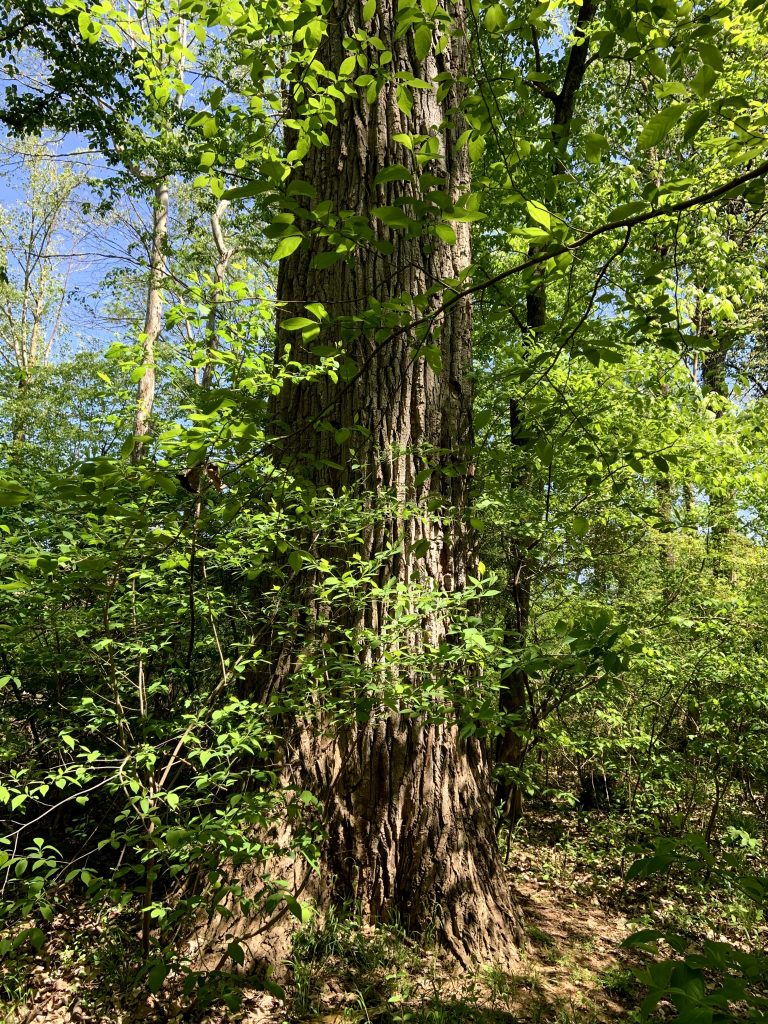
One of the pins for the Eastern Cottonwood (#073) had it on the greenway trail that goes up into the woods near one of the two ponds, which is used for part of the cross-country race route. Walking to the pin, I quickly spotted a gigantic Cottonwood. I measured it, took a bunch of photos, and proudly strode back to the parking area. Just to be sure, I referred back to the original photos and it just does not look like the same tree. First of all, the circumference didn’t match. There was also a pin right by the first pond for the Boxelder (#062). I found a row of Maples there, and I wasn’t exactly sure how to identify the Boxelder. I felt like that one was a strikeout, too.
During one of my walks at work one day, I spotted the top of two very tall trees from a parking lot on the other side of the greenway path. This spot looked an awful lot like the original pictures, but I had to come back with bushwhack clothing to go out in the woods. Mary Propst is another volunteer with the new committee, and she met me out there back in spring right as the virus outbreak was heating up. We both wore masks, and started stepping our way through shoulder-high grasses toward the woods. Very quickly, we stumbled onto an old trail. It was obviously part of the official park at some time, as you can see some remnants of old signage. We got to the base of a huge Cottonwood, but then quickly spotted another bigger one nearby.
I keep all my field documentation in OneNote, so I can view everything on my phone. I have original location notes and original photos. With this Cottonwood, it had a very unique footprint at the base. It has two large “feet” anchoring it in the ground, clearly visible in the original photo. We had found the tree! Mary took a lot of good photos, and we collected the new measurements. The trunk circumference had grown by about 20% in 27 years. It stands in wet, almost marshy woods near the creek. As we walked back out on the old trail, we also looked for the Boxelder. It was supposed to be on the creekbank, which is exactly where they like to live. Luck was with us, as we walked into the giant downed trunk of the old dead tree lying partway down toward the creek. Unlucky for the tree, though.
During the next few months, the new committee will be focused on verifying the last 9 trees. There is a pair of trees off Oglukian Road that were probably taken out when a new home was built. Over close to Charlotte Country Club, we have been able to locate 2 of the original 6 on a property. We know that one was lost in a storm, so we have some confidence we can find the other 3 on a revisit. There is an elusive Paw Paw, a Mimosa that is supposed to be on the property at McGuire Nuclear Station, and two Sassafras that we have very little information to go on.

